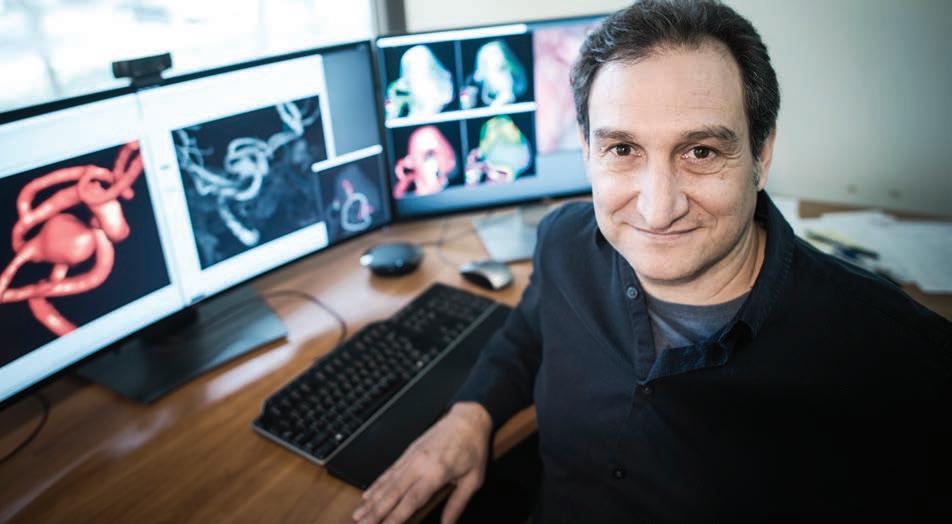
1 minute read
A Smarter Way to Predict Brain Aneurysms
RESEARCH PARTNERS
A Smarter Way to Predict Brain Aneurysms
Juan Raul Cebral, a professor of bioengineering, is using image-based, patient-specifc computational modeling to study blood fow in the brain to learn more about aneurysms.
Photo by Evan Cantwell
A bioengineering researcher is combining math and medicine to help patients who have strokes and other cerebrovascular disease.
Juan Raul Cebral uses image-based computational modeling to study blood fow in the brain so he can learn more about aneurysms. A cerebral aneurysm is a ballooning, weak area in the wall of an artery that supplies blood to the brain. If it ruptures, it can cause a hemorrhagic stroke, which can lead to death or brain damage.
“We are trying to understand how aneurysms form, progress, and rupture,” says Cebral, PhD Computational Sciences and Informatics ’96.
A professor in the Department of Bioengineering, Cebral has funding for three research projects from the National Institutes of Health (NIH) and funding for another from Philips Healthcare. In one NIH-funded study, Cebral and his team created a database of more than 2,000 aneurysm cases from Inova Fairfax Hospital, Mayo Clinic, and Mount Sinai Medical Center in New York. They’re using that data to develop models to predict which aneurysms are most likely to rupture.
The risk of an incidental aneurysm rupture—one with no symptoms that’s discovered by chance—is below 1 percent, but if it ruptures, about 50 percent of people die, Cebral says. About 50 percent of the other half never recover a normal life because of bleeding into the brain. “That’s devastating,” he says. Current imaging tools give doctors some insights into the risks of a rupture, but the tools don’t reveal suffcient details about fow dynamics (blood fow in the arteries of the brain), the body’s biological response to those fows, or the artery wall biomechanics, he says. It is not well understood how the aneurysms form, but it’s thought that abnormal blood fow conditions result in arterial degeneration, he says. An aneurysm starts to grow, and the artery wall progressively degenerates and weakens.
To gain insights into this process, Cebral and colleagues are using three-dimensional images of patients’ aneurysms and constructing patientspecifc computational models. “In those models, we’re solving the mathematical equations that









